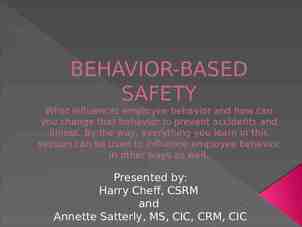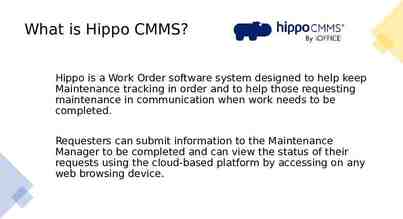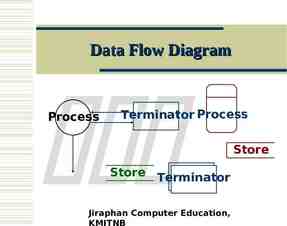Solar Tank Storage vs Batteries
15 Slides3.24 MB

Solar Tank Storage vs Batteries

Two important concepts Water per day – Total water requirements for the application – Pump water during daylight hours Store water not electricity – Make water available when needed – Simple and efficient 2

Two important concepts Water per day – Historically pumps have been specified based on the flow they deliver per minute or hour. For example 1000 litres per hour or 264 USG per hour or 4.2 gallons per minute – With solar pumping you are looking to maximise the water pumped while the sun shines. For this reason litres (or cubic metres or gallons) per day is the critical measurement – Always talk about customer requirements per day rather than per hour to avoid confusion Store water not electricity – Relying on batteries to pump water overnight introduces cost and complexity to a solution – Batteries are heavy, expensive, difficult to transport and dispose of and have a limited (3 year typically) life – Storing water in an elevated tank is efficient and means water is always available 3

Initial Site Information Borehole Site – Dadaab, Kenya Borehole Depth – 60m Borehole Yield – 3 m3/hr Daily Water Requirement – 10 m3 Avg Daily Solar Irradiation – 6 kWh/m2 Ambient Temp – 30oC 4

Average Daily Irradiation (EA) kWhr/m3 5

Case 1: 10m3/day/No Tank Using Compass Solar Pump Tool PS600 HR-10 Selected Avg Daily Output 10m3hr Solar Power Required: 750Wp (3 Panels of 250W) Detailed Design Report Attached Dadaab 60m 10cbm 750Wp.pdf 6

Water Produced/Consumed No Storage – What is Produced is Consumed Immediately 1.6 1.4 1.2 1 0.8 0.6 0.4 0.2 0 06:00 07:00 08:00 09:00 10:00 11:00 Produced 12:00 13:00 14:00 15:00 16:00 17:00 18:00 Consumed 7

New Site Information Daily Water Requirement – 16 m3 Avg of 1 m3/hr is required up to 11pm at night. All other factors remain constant. 8

Case 2: 16m /day (Plus Tank) 3 Using Compass Solar Pump Tool Use 10m3 storage tank for night consumption PS600 HR-10 Selected Avg Daily Output 16m3hr Solar Power Required: 1,500Wp (6 Panels of 250W) Detailed Design Report Attached Additional CAPEX: 1 No 10m3 tank, 3 No Panels of 250W. Additional O&M: None. Dadaab 60m 16cbm 1,500Wp.pdf 9

Water Produced/Consumed 10m3 Storage – 1 m3/hr available from 8am per hr till 11pm 7 6 5 4 3 2 1 0 06:00 07:00 08:00 09:00 10:00 11:00 12:00 13:00 14:00 15:00 16:00 17:00 18:00 19:00 20:00 21:00 22:00 23:00 Produced Consumed Storage Tank 10

Case 3: 16m3/day (Plus batteries) Using Compass Solar Pump Tool PS600 HR-10 Selected Daily Power Reqts: – – – – – – At 48VDC Battery Voltage. Power 392 W, Flow 1.3m3/hr For 16m3/day, pump needs 16/1.3 12.3 operating hrs per day. 392 x 12.3 4,822 Wh per day. 4,822/48 100 Ah. Battery Depth of discharge 50% - Use 100Ah/050% 200 Ah 12V 100 Ah 12V 100 Ah 12V 100 Ah 12V 100 Ah Battery Array – Use 2 strings of 4 12 V, 100 AH batteries to achieve 48V, 200AH power. 48V 100 Ah 48V 200Ah 48V 100 Ah 12V 100 Ah 12V 100 Ah 12V 100 Ah 12V 100 Ah 11

Case 3: 16m3/day (Plus batteries) Array Sizing: – – – – – – – Battery efficiency 85% Wiring efficiency 97% PV efficiency: 90% (cell temp/dirt) PV battery mismatch (MPPT tracking) 100% PV Charge controller efficiency: 95% Total Efficiency factor .85*.97*.9*1*.95 0.70 Additional CAPEX: 8 No 100Ah batteries, 30A Charge Controller, 3 No Panels of 250W. Additional O&M: Battery Replacement every 3-5 years. Solar Array Size 4,822Wh/6kWh 804 Wp Solar Array / 0.7 losses 1,149 Wp 6 SOLAR PANELS OF 250 Wp 12

Water Produced/Consumed Battery Backup 1.4 1.2 1 0.8 0.6 0.4 0.2 0 06:00 07:00 08:00 09:00 10:00 11:00 12:00 13:00 14:00 15:00 16:00 17:00 18:00 19:00 20:00 21:00 22:00 23:00 Produced Consumed 13

Comparison Case 1 Case 2 Case 3 Flow 10m3/day 16m3/day 16m3/day Pump PS600 HR-10 PS600 HR-10 PS600 HR-10 # Panels 3 x 250 Watts 6 x 250 Watts 6 x 250 Watts Tank 0 1 No 10,000 lit (Budget K 80,000) 0 Batteries 0 0 8 No 12 V, 100 AH (Budget K 180,000) Float Switch Charge Controller (Budget 30,000) Other Accessories Supply Period 8:00 – 16:00 8:00 – 23:00 8:00 – 20:00 O&M None None Batteries (3 - 5yrs) 14

THANK YOU! Q&A






